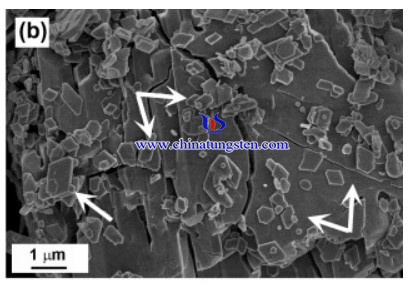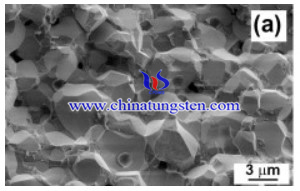Tungsten–Yttrium Oxide Composites from Ammonium Paratungstate
- Details
- Category: Tungsten Information
- Published on Monday, 04 January 2021 21:47
Tungsten, owing to its high melting point combined with high strength at elevated temperatures, high thermal conductivity and low sputtering yield, is being considered as one of most promising candidates for plasma facing wall material in future fusion reactors.
Doping of nanoparticles of refractory materials, such as, TiC, La2O3 and Y2O3. The dispersion of oxide nanoparticles not only inhibits the grain growth during the consolidation but also enhances the thermal stability under high temperature.
Thus, a preparation method of tungsten doped yttrium nitrate composites has been introduced to overcome the drawbacks such as brittle transition temperature (DBTT) and to enhance the thermal stability. Ammonium paratungstate (APT) and yttrium nitrate are as the starting materials. The as-prepared W–Y2O3 nano composites can be used as an excellent material for tungsten alloys.

The synthesis process is as below:
Ammonium paratungstate (APT) and yttrium nitrate hydrate were received without further treatment. Firstly, heating of APT was performed at 150 °C for 1 h. Then 45 g of preheated APT powder and 1.3 g yttrium nitrate salt were added into 135 ml water. The solution was being stirred at 80 °C for 3 h, the suspension is filtered then. The obtained powder was dried at room temperature for 10 h and a sample from dried powder was taken for the chemical analysis which was found to contain 70.8 wt.% W and 0.55 wt.% Y, corresponding to W–1Y2O3 (wt.%) in reduced powder.
The precursor was first calcined at 450 °C under nitrogen atmosphere for 1 h followed by reduction by hydrogen in two steps, the 1st step at 600 °C for 3 h and the 2nd step at 800 °C for 6 h. Finally the powder was allowed to be cooled to room temperature in the furnace overnight under a flow of 5% hydrogen in nitrogen gas.
A spark plasma sintering apparatus, Dr. Sinter 2050 SPS (Sumitomo Coal Mining Co., Japan), was used to sinter reduced powders under vacuum. A schematic diagram of the sintering cycle is shown in Fig. 1b. Three different schemes were used for the sintering of the reduced powder. In Schemes A and B, the samples were sintered for 3 min holding at two different temperatures 1100 and 1200 °C respectively. In the third Scheme C, the powder was sintered in 2 stages; 1st at 900 °C for 5 min and 2nd at 1100 °C for 1 min holding. All samples were sintered at same heating rate (100 °C/min) and pressure (75 MPa). SPS machine was switched off after completing the heating cycle (according to Fig. 1b) and samples were left to be cooled in SPS chamber. The density of the sintered material was measured by Archimedes method. Polished sintered samples were subjected to Vickers microhardness testing under 200 g load and a dwell time of 20 s at room temperature. EDX detector.

In conlusion, Y2O3 dispersed (1 wt.%)-tungsten powder was synthesized by an improved method through reaction in solution at 80 °C for 3 h. The improved method yielded a precursor with APT-like particles less than 20 μm and ultrafine Y containing plate like particles. The reduced powder was successfully sintered by SPS at relatively low temperature.
- APT Manufacturer & Supplier, Chinatungsten Online: ammonium-paratungstate.com
- Tungsten News & Prices of China Tungsten Industry Association: www.ctia.com.cn
- Molybdenum News & Price: news.molybdenum.com.cn
- Tel.: 86 592 5129696; Fax: 86 592 5129797; Email: sales@chinatungsten.com



 sales@chinatungsten.com
sales@chinatungsten.com